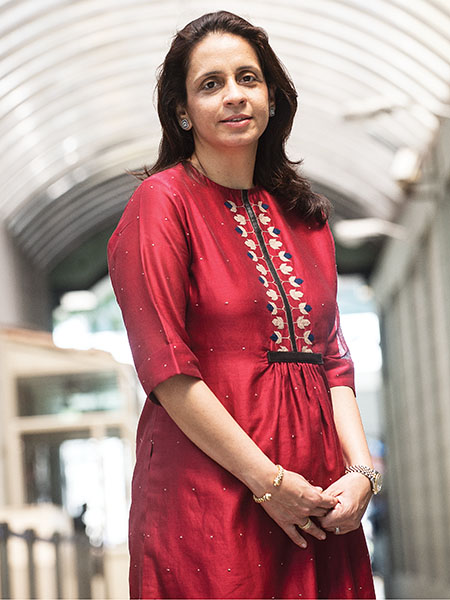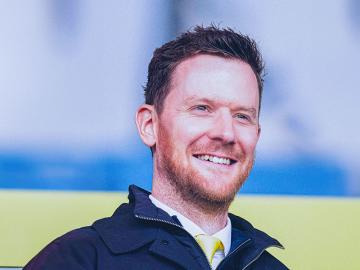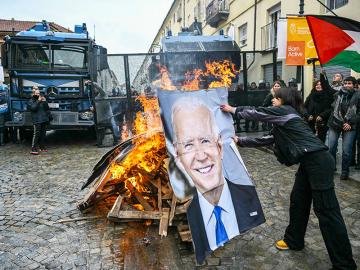
Samina Vaziralli: Cipla's guiding force
Under Vaziralli's guidance, Indian drug major Cipla gets a shot in the arm from US acquisitions

Samina Vaziralli 42, Executive Vice Chairman, Cipla, India
Image: Vikas Khot
Image: Vikas Khot
In 2011, Samina Vaziralli, a third-generation scion at Cipla, was being groomed for succession with her younger brother. Four years later, he stepped out, leaving her to take on the legacy of India’s third-largest pharma company.
By 2016 Vaziralli had moved to the highest executive post, vice chairman, at the Mumbai outfit and charted an expansion course encompassing India, the US and South Africa, with China and Brazil also in her sights. That included spearheading the company’s entry into the US in 2015 through the acquisition of two generic-drug makers valued at a total of $550 million.
Until then, Cipla—which makes drugs to treat respiratory and cardiovascular diseases as well as cancer, malaria and Aids—had worked with partners in the US, handling R&D and manufacturing but selling the drugs under its partners’ labels. “The value was all in the front end, and we wanted to own the front end,” says Vaziralli. “We had the capability and the technology. So we decided to launch ourselves.”
Revenue from the North American market has surged to $392 million in the year ended March 31, 2017, from $148 million in the year ended March 31, 2015. North America contributes 18 percent of total revenue, and there’s more to come as Cipla has 97 drugs awaiting final approvals from the US Food & Drug Administration. A further 40 percent of revenue comes from the domestic market and about 12 percent from its South Africa portfolio. For the first nine months of fiscal 2018, revenue at the maker of branded and generic drugs rose by 13 percent to $1.8 billion, while net profit rose by 22 percent to $198 million.
Vaziralli, 42, didn’t grow up with the idea of running the company, founded by her paternal grandfather in 1935. She got an undergrad degree in commerce at Mumbai’s Sydenham College, then went to the London School of Economics in 1998 for a master’s in finance, joining Goldman Sachs in London right after. She moved a couple of years later to their New York office, then returned to India in 2004 and took a break to focus on family.
In 2011 she joined Cipla, where her uncle YK Hamied is non-executive chairman and her father, MK Hamied, is non-executive vice chairman. The family, which has a $2.5 billion net worth stemming from a 37 percent stake in Cipla, decided to hand over operational control to professionals at that time. Vaziralli started shadowing her uncle and father and soon became the company’s global head of strategy and M&A. It was a rocky period marked by top-level exits. Vaziralli steadied the boat by building a second and third line of professionals. Cipla hired a CEO with whom she works closely; he handles operations, and she acts as the bridge between family and management as well as family and the board. In 2015 her brother, Kamil Hamied, left to become a venture capital investor in London, something he had flagged a year before.
A key element of the Cipla legacy is affordable drugs, in particular life-saving HIV drugs, primarily in Africa. It’s seen as a saviour in countries like Uganda that were ravaged by Aids. “There was a time when the [Ugandan] capital city of Kampala would be lined with coffin makers—when you drove up from the airport,” says Vaziralli. All that changed when Cipla made antiretroviral drugs available for less than $1 a day. “In Dr Hamied’s words, ‘What’s the use of developing life-saving medicines if you can’t make them affordable?’” asks Vaziralli, quoting her uncle.
Vaziralli says one of the key strategies she uses for work-life balance is to set priorities. “Every day you have to make a choice—a choice to embrace one thing and to let go of another,” she says. “You also have to create a support system.” Her two sons, 8 and 12, sometimes do homework at the Cipla headquarters or drop in to have lunch with her. She also makes time to attend squash tournaments with her elder son, a nationally ranked player. And she has an athletic streak, running three or four half-marathons a year: “My best thinking and focus has come when I am running.”
(This story appears in the 22 June, 2018 issue of Forbes India. To visit our Archives, click here.)
Post Your Comment
Studded stars: World's most valuable soccer players
Here's how this company is making India a quality food destination














